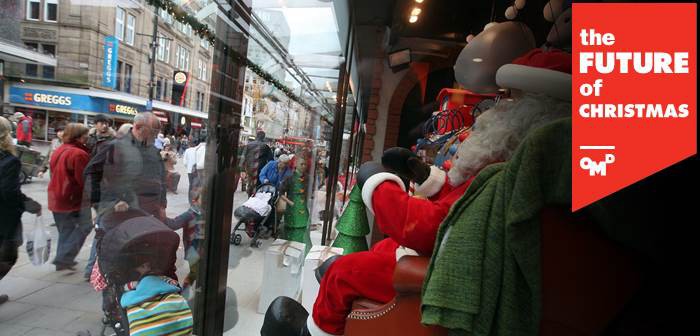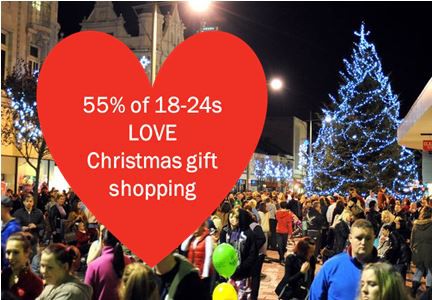Recently we announced the latest in our OMD Future of Britain research series: The Future of Christmas.
One of our key findings from this mammoth piece of work was a sequence of popular myths on the subject of the festive period that our data disproved. Over the coming months we’ll continue to share these with you and what the implications are for brands and advertisers.
Today Myth #5: Millennials do everything online, including Christmas shopping
We know that millennials have grown up embracing the deep discounts and convenience offered by online shopping, however our research showed that over half of them are socially motivated and love going Christmas shopping with others. Four in five millennials bought at least some of their Christmas gifts in stores.
For some, it is a good opportunity to catch up with friends and relatives and also a great excuse to get some ‘accidental’ gifts for themselves while searching the shops (35% of 16-24s were likely to buy a gift for themselves when out shopping for Christmas).
In the online communities we conducted, we saw a few examples of girls doing their Christmas shopping with their mums, not only this was a good excuse to spend some mother-daughter time but it was also seen as part of their yearly tradition.
‘Christmas shopping started early this year and I have a big Christmas shop planned with Mum for next Friday’ (Kate, 25 from London)
‘I put the ideas next to the list, then I go for a coffee with Mum to arrange one or two days to go Christmas shopping, where we want to go and who we are going to do that day’ (Sarah, 20 from Newcastle)
We know that online shopping is growing fast for this group, however another reason why they are shopping in store is because the speed of logistics hasn’t quite caught up with their demand for instant gratification. According to Marketing Magazine, they basically don’t have the patience to wait three days for their delivery!
A good example of this behaviour is that this Christmas was the first time that John Lewis saw their click and collect sales overtake the home delivery service (Source: John Lewis online data).
So what?
If shopping is seen as a social event, smart brands should find ways to make it as fun and sociable as possible. Blending online and offline is critical for this group, so brands need to add to their physical experience when they go shopping with others, as well as enhancing their virtual social experience.
Harrods is a good example of this. Every Christmas they have the Harrods Christmas Grotto, where they encourage consumer participation for Christmas celebrations.
How can other brands adopt this experience-focused approach?
Next time Myth 6: Christmas is fun for all the family





